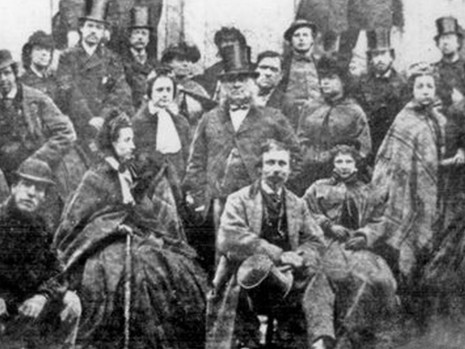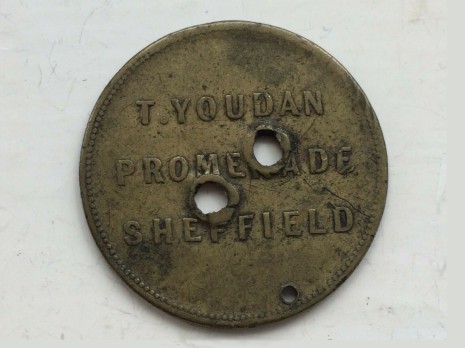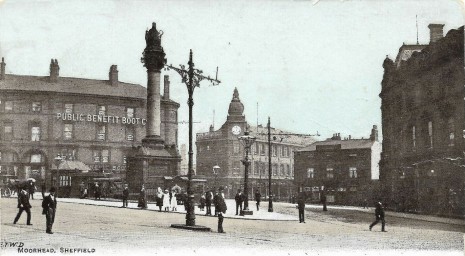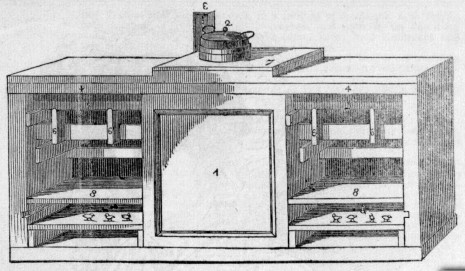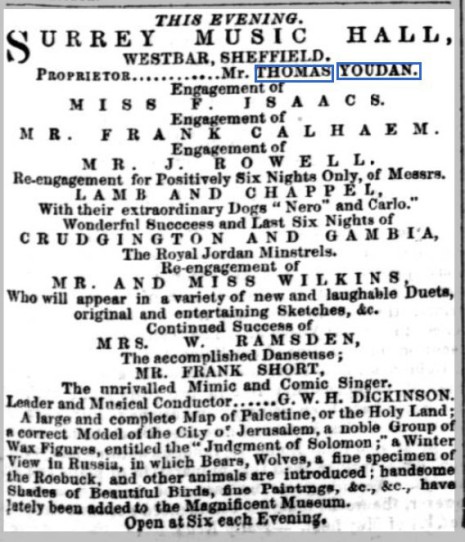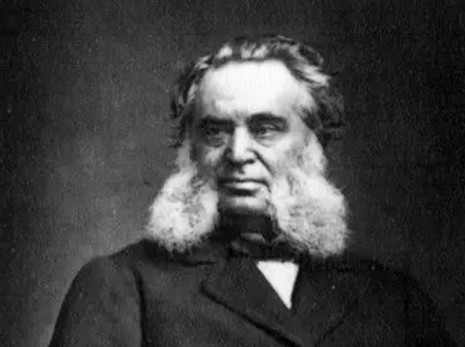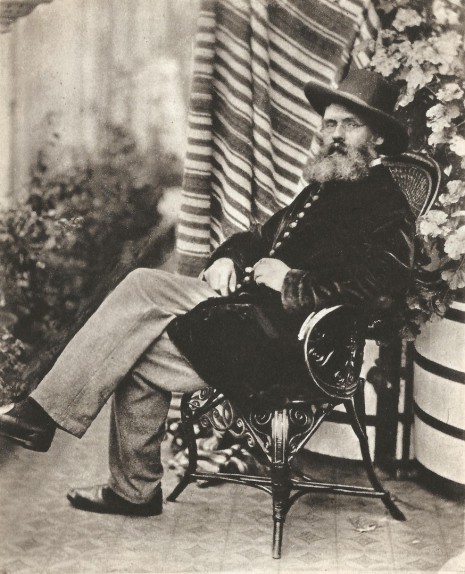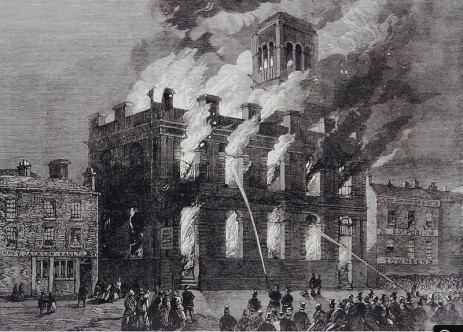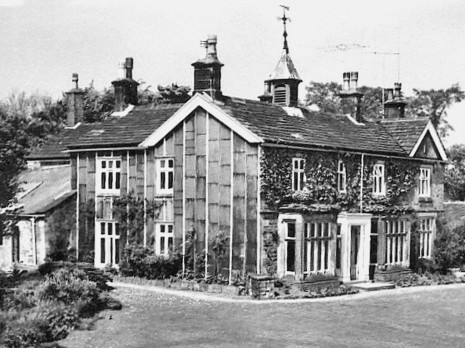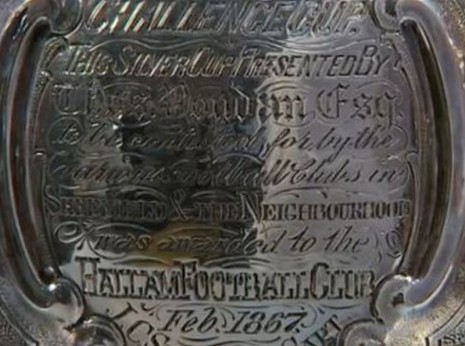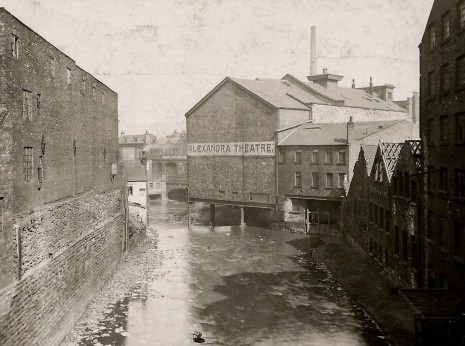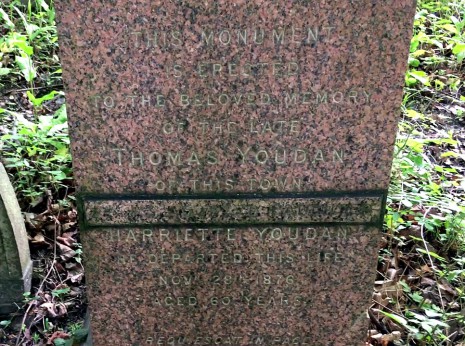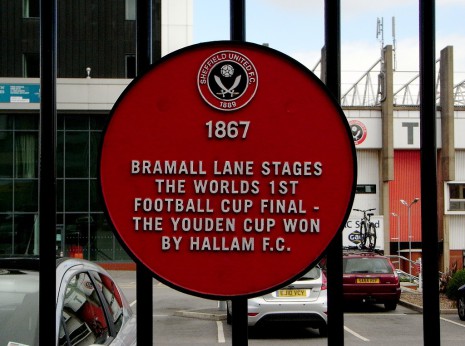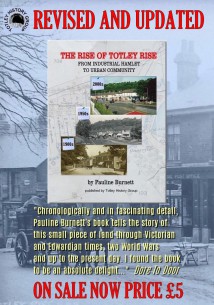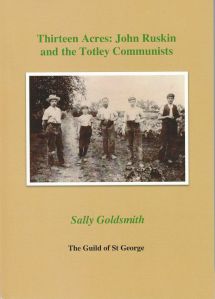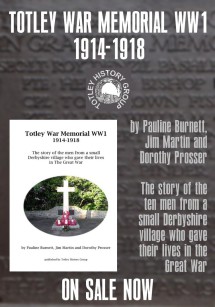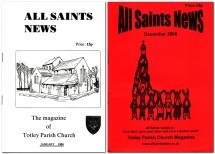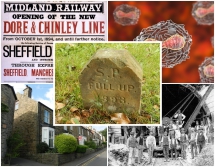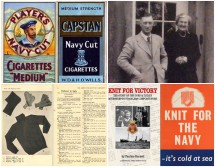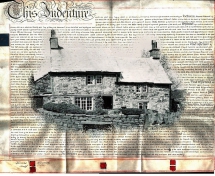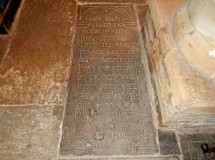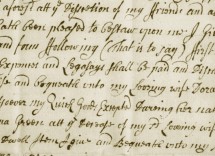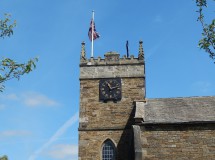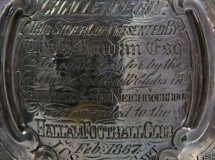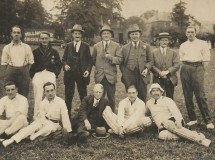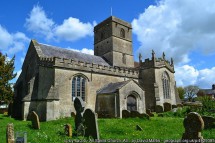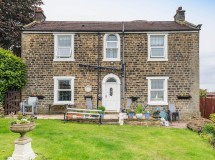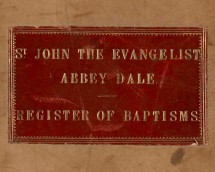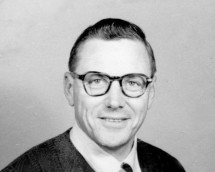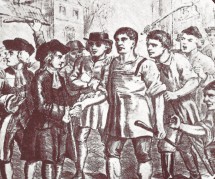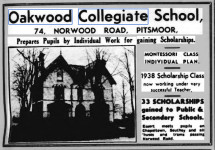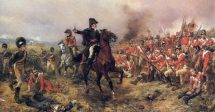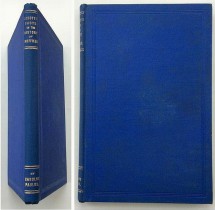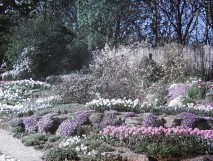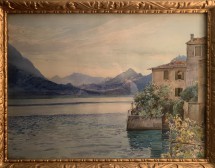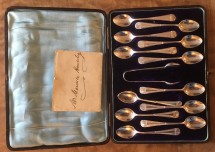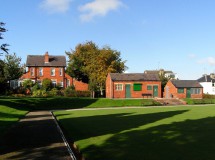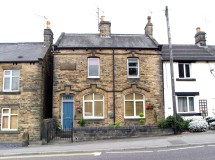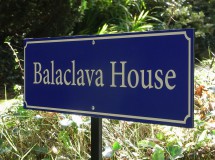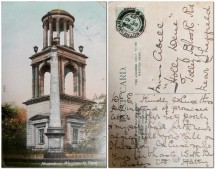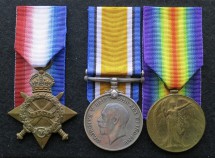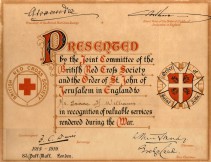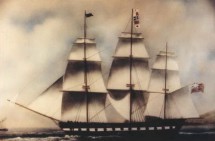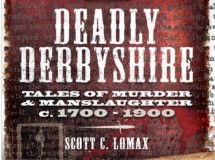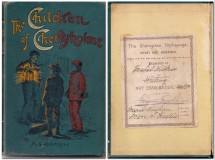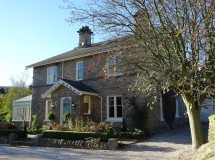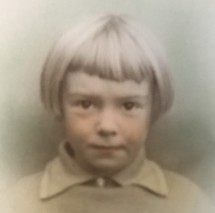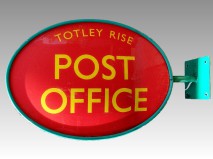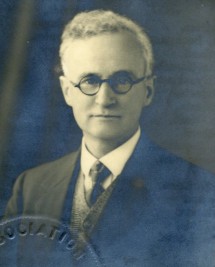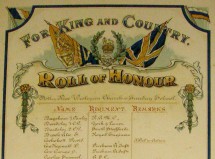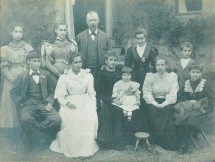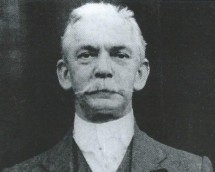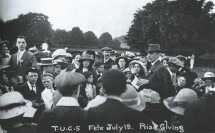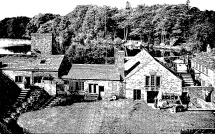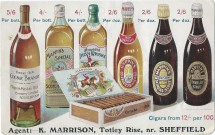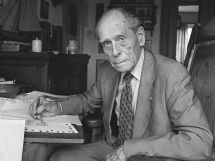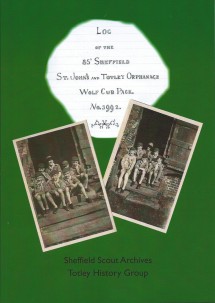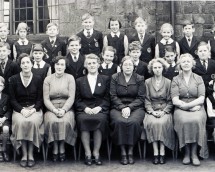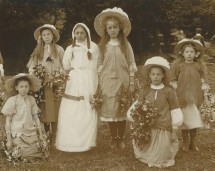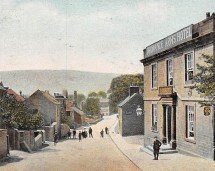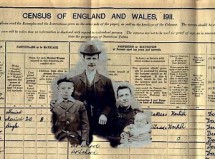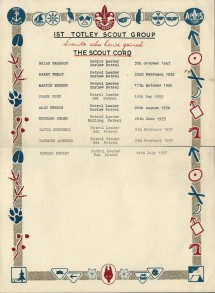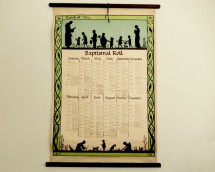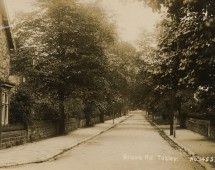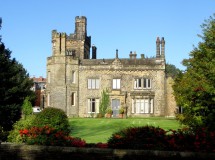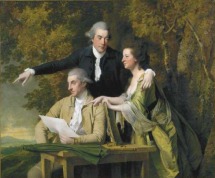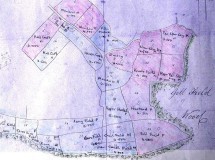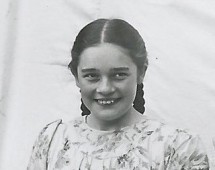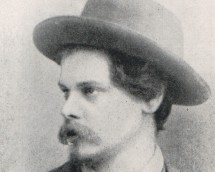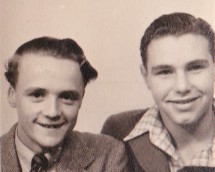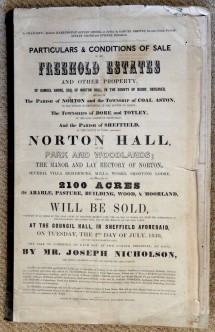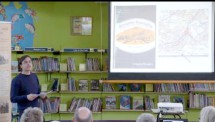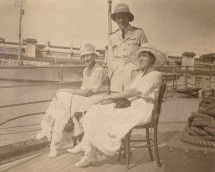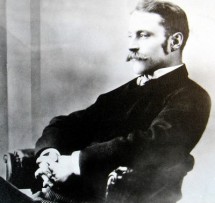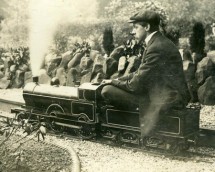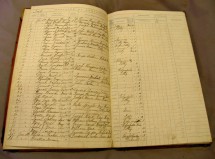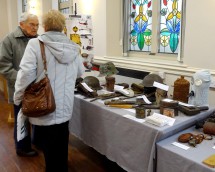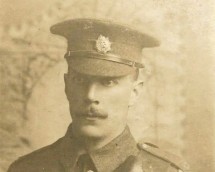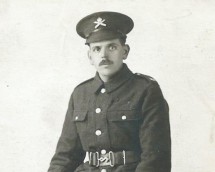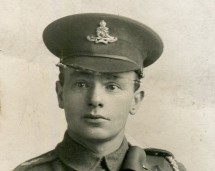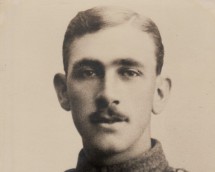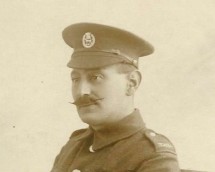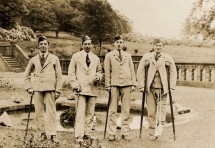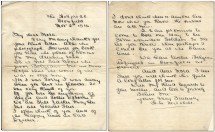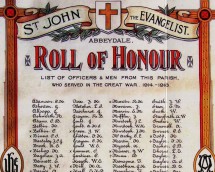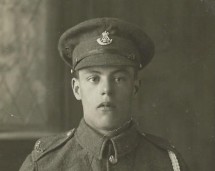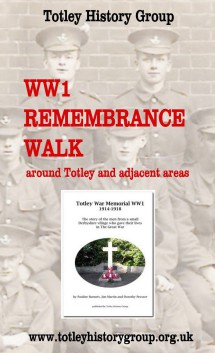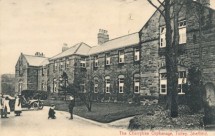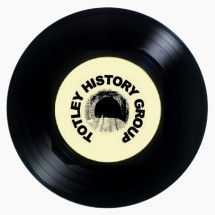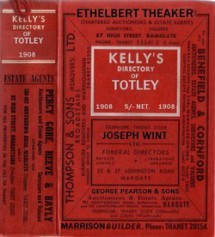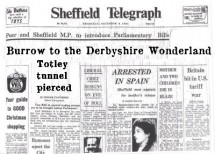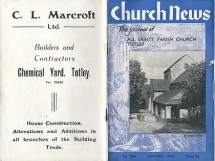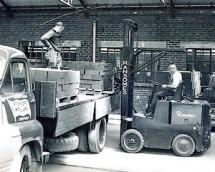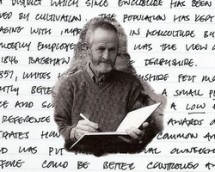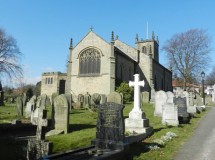Thomas Youdan - Theatre Proprietor
Thomas Youdan lived in Totley for less than two of his sixty years but it is for what he did whilst he was here that he is best remembered. The Youdan Cup was the world's first knockout football competition held in 1867 between twelve teams from the Sheffield area with the final played at Bramall Lane cricket ground. The silver trophy was created by Ebenezer Hall's firm, Martin, Hall & Co. When it appeared on Antiques Roadshow in 2008 it was valued to be worth at least £100,000 by silverware expert Alastair Dickenson. We thought it was high time that we found out more about the man whose name it bears.
The Early Years
Thomas Youdan was born in Streetthorpe near Doncaster in 1816, the ninth of ten children of Samuel Youdan, an agricultural labourer, and his wife Hannah (Anne) Hall, who were married at Kirk Bramwith, Yorkshire on 30 June 1800. All of the Youdan children were baptised at St. Oswald Parish Church, Kirk Sandal: George (24 January 1802), Charles (24 April 1803), Hannah (22 November 1804), Sarah (12 July 1806), Samuel (5 December 1808), Anne (1 April 1810), Robert (19 January 1812), Jane (2 February 1814), Thomas (19 May 1816), and John (28 June 1818). Charles was the only one who died in infancy. He was buried at St. Oswald's on 10 June 1805.
As a young man, Thomas worked with his father as an agricultural labourer but in 1834, at the age of 18, he decided to follow a number of his brothers who had moved to Sheffield seeking work. At first he was employed as a labourer with the firm of James Dixon & Sons of Cornish Place, Neepsend. Trade was very brisk and Thomas took the opportunity of learning the art of silver plating. He was a clever workman and subsequently found employment as a silver stamper for a number of the large firms in Sheffield.
His career changed after his marriage to Mrs. Mary Bodger, a widow, on 26 November 1843 at Sheffield Parish Church. Mary was born in Rotherham on 31 August 1816, the daughter of Mary and Thomas Naylor, a miner. She married Emmanuel Bodger at Sheffield Parish Church on 24 January 1838. Their daughter, Mary Jane, was born on 19 April 1840 but she sadly died later the same year and was buried at St. John, Park on 27 December. Emmanuel was a brewer and publican who ran the Brewer's Arms at 28 Broad Street, Park until his death at the age of about 27, on 27 August 1843. Thomas Youdan took over the beerhouse following his marriage to Mary and by July the following year Thomas had a second house in Hartshead.
The Surrey Music Hall
Thomas was an ambitious man who had plans to bring high quality entertainment and attractions to his clientele. By 1848 he had moved to a larger property at 66 West Bar which he called Spink's Nest, located where the Law Courts now stand. It had been a well-known pawnbroker's shop run by John Spink until his death on 30 July 1846 at the age of 61. The shop stood on a large corner site that was all owned by Mr. Spink and which totalled about 1,200 square yards. There were three further shops facing on to West Bar, all with dwelling houses behind, and thirteen dwelling houses facing on to Workhouse Lane. To the rear there were stables and a large communal space, known as Spink's Yard. Thomas soon expanded the beerhouse into adjacent buildings and made a concert room and stage which was big enough to put on impressive performances. Fully refurbished throughout, Youdon's Royal Casino opened to the public on 17 March 1849 with musical entertainment every evening and on Monday and Tuesday afternoons.
At the annual Brewster Session held at the Town Hall on 31 August 1849, Thomas's application for a wine and spirits licence was refused by the Bench. Such licences, it was said, were granted to houses to supply refreshments to travellers. The Royal Casino was more like a theatre and although Manchester, Liverpool and other large towns had granted full licences to theatres, Sheffield had not and it would set a precedent.
A further application was made the following year when it was pointed out that Thomas had spent £1,700 to adapt the building to its current purpose. Its concert room could now hold 1,500 people and no fewer than 10,000 people had visited the building during the previous Christmas week. The Casino was closed on Sundays and would remain so and would close at a time in the evening as specified by the magistrates if a licence were to be granted. A policeman was in permanent attendance paid for by Thomas. Although the magistrates acknowledged that it had been proven that the place was conducted in a respectable manner, the licence was again refused for precisely the same reason as before. Application and refusal were to become recurring annual events. Nevertheless the Royal Casino continued to be highly profitable based presumably upon huge beer sales alone as, initially at least, entertainment was offered each night entirely free of admission charges.
It was not only alcohol that was subject to licensing laws. The Regulation of Theatres Act of 1843 required licences for all manner of performances. Thomas often found linguistical contrivances for describing operas and dramas to avoid falling foul of the law. In July 1850, however, he rendered himself liable for a fine of £20 for each of the eighteen nights on which a Mrs. Montgomery gave operatic performances. His defence was that she had been engaged to perform in the ballet Mad as a March Hare, although Mrs. Montgomery had never danced professionally in her life. In September 1850 Thomas changed the name of his establishment from Royal Casino to the Surrey Music Hall. No doubt the name was chosen to draw comparison with Sheffield's most respectable concert hall which was the Music Hall in Surrey Street. Most people continued to call it The Casino.
In the census on 30 March 1851, Thomas and Mary were recorded at 66 West Bar. Curiously, Thomas was described as a silversmith and beerhouse keeper. He never lost his affection for the Sheffield silverware and cutlery trades. With them were a domestic servant and two of Thomas's nieces. Emily Youdan was aged 17 and a barmaid and her sister Harriet was aged 7, the youngest of nine children of Thomas's eldest brother George Youdan, who had married Mary Hudson at Holy Trinity, Hull on 28 March 1826. George and Mary were running a beerhouse in York with three of their sons.
When James Scott moved from Manchester to take a lease on a massive old circus building in Blonk Street and convert it into the Adelphi Theatre, Thomas responded by rebuilding the Surrey Music Hall with an increased capacity of 3,000. It reopened in November 1851 and the following month, Charles Dillon, the lessee of the Theatre Royal charged Thomas with having allowed his premises to be used for the public performance of an unlicensed stage play called Love in Humble Life. Thomas argued on a technicality of law that a performance consisting of dialogue, songs, posturing, music and dancing was not a play which under the law was defined as "every part of tragedy, comedy, farce, opera, burletta, interlude, melodrama, pantomime or any part thereof". The case was dismissed but further cases continued to be brought against him the following year, most notably by James Scott. The Bench recognised that business rivalry was at the heart of the matter and fined Thomas just £5.
On 19 May 1853 Thomas's wife Mary died in Rawmarsh whilst staying at the home of her brother Samuel Naylor, a coal miner. She was aged 36. She was buried at St. Lawrence, Rawmarsh four days later. There were no children from her marriage to Thomas who never remarried. After further nominal fines for staging unlicensed entertainment, Thomas was again taken to court by James Scott in January 1854. It was proven that the Surrey Music Hall had put on event called Chinese Carnival which was an unlicensed pantomime. It played to full audiences whilst the Adelphi had lost money on a properly licensed event that was badly attended. Thomas was fined 42s. and warned by the magistrate against staging further unlicensed seasonal events at Easter and Whitsuntide.
Thomas finally applied for and was granted a three month theatrical licence in 1854 but he allowed it to expire when the court made it crystal clear that his beerhouse licence would not be renewed to run concurrently. Moreover, he would not be permitted to flip-flop between holding the two licences at different times of the year as and when it suited him. The beer licence was the more valuable and, despite repeated assurances to the contrary, the fines for unlicensed performances continued.
The Crimean War
0n 3 January 1856 Thomas announced that he had asked the confectioner George Bassett to bake an enormous twelfth (i.e. twelfth-night) cake to celebrate the end of the Crimean War with Russia. The cake was to be sold at 1s. 6d. per one pound portion to visitors of the Surrey Music Hall on 31 January and succeeding nights. Tickets were sold in advance entitling admission and a portion of cake. Newspaper advertisements said that the cake would contain 154 randomly placed and individually numbered medallions which would entitle the holder to share in "gift money" of £200 divided into prizes with values between 10s. and £10. However, after more than 7,000 tickets had already been sold, Thomas was forced to announce that no prizes would be distributed. He had been warned by John Greenwood, Assistant Solicitor to H.M. Treasury, that if he went ahead with the scheme as advertised he would face prosecution for an illegal lottery. Thomas offered to return the money to anyone who applied for a refund but, apparently, very few did as the price of the cake was very attractive.
When assembled, the cake was between 8 and 10 feet in diameter and 9 feet high and weighed around 4 tons 8 cwt (9,860 lbs). The recipe comprised 1,830 lbs. of sugar; 1,360 lbs of butter; 3,410 lbs. of fruit; 2,050 lbs. of flour; 1,020 lbs. of candied peel and 10,500 eggs. It was baked in sections and united into one mass with 424 lbs. of icing. It was conveyed to the music hall from Mr. Bassett's bakery in Broad Street, Park by three drays, drawn by two horses each. It was originally intended to lay down rails to convey the cake to the front of the stage but this was not feasible and it was positioned at one end surrounded by drapery and festooned by flags of the nations. So many people had asked to see the cake that it was exhibited for three days before it was eventually cut into portions and distributed to ticket holders.
Whilst most people were happy that they got a bargain there were complaints from a sizeable minority that their portion of cake was not properly cooked. In theory this should not have happened because the cake was built up from smaller individual cakes. Mr. Bassett eventually confessed that "some small portions were rather soft" (an understatement) and suggested that by adding a little flour and suet, and mixing with milk, the cake could be converted into "as good and as cheap a plum pudding as could be made." Thomas was not blamed, particularly when it was demonstrated that he did not make a profit from the sale having paid between 11d. and 1s. per pound to Mr. Bassett, and had the costs of printing, advertising and distribution to pay as well.
The Treaty of Paris which concluded the war was signed on 30 March 1856. To celebrate the end of hostilities, Thomas put on a Grand Gala at Newhall Gardens, Attercliffe on 23 and 24 July, featuring the band of the Surrey Music Hall and a variety of singers, dancers, gymnasts etc. A firework display representing the Siege of Sebastopol was performed in front of a giant mural of the scene covering 90,000 square feet of canvas. Admission was 6d. It was so successful that two further events were held at the same location featuring a number of military bands. For the second of those events, Thomas had purchased from George Wostenholm of the Washington Works, 222 top quality, six-bladed spring knives as gifts for the surviving officers and men of the 4th Dragoon Guards. Each knife was inscribed with the soldier's name and rank. 140 were presented at Newhall Gardens on 8 September and the remainder were sent to Leeds and Bradford to be presented there.
To conclude the peace celebrations, Thomas made arrangements for an extraordinary outdoor tea party. Applications for free tickets were invited from 2,000 old women aged 60 and upwards. The Duke of Norfolk gave his permission for the event to take place on a site adjacent to the Cattle Market by the side of the River Don, close to Sheffield Victoria Station. Tables were laid and decorated with flowers. Mr. Thompson of Church Gates was contracted to supply the catering. As with the monster cake, the quantities were enormous and included 800 lbs. of spice cake; 400 lbs. of bread; 160 lbs. of butter; 90 lbs. of tea; 400 lbs. of lump sugar and 60 gallons of cream and milk. Two large kettles were borrowed from the Temperance Society. At a quarter to five on 18 June 1857 the crockery had been placed on the tables and most of the guests had arrived, dressed in their finest clothes, when the heavens opened. Thomas was hard pressed to convey the old ladies to the shelter of the nearby railway arches and thence home. The spice cake was offered for sale at a cheap rate and a fresh batch ordered for a week hence when, thankfully, the event took place in perfect weather. One of the top tables was reserved for the nineteen very oldest ladies whose combined age was 1,668 years. The tea party was watched by up to thirty thousand spectators. It was followed by a ball which was attended by an estimated 12,000 people.
At the beginning of 1856 a group of men from Sheffield's clubs and lodges - Thomas sponsored Oddfellows and Foresters lodges - formed a committee with the purpose of presenting Thomas with a testimonial for the many good deeds he had done for them and for the ordinary working people of Sheffield. When approached in September, Thomas declined their offer saying he had done nothing to merit such an honour but instead proposed that the money they had raised should form the nucleus of a fund to build a monument to the memory of those soldiers and sailors who had lost their lives in the Crimea. Thomas placed newspaper advertisements seeking relatives and friends to furnish him with the names to be inscribed on tablets and engaged the sculptor Edwin Smith to produce designs.
However, his idea quickly caught the imagination of the Sheffield public and it was thought that the memorial should be the work of the town not of a private individual. His Royal Highness the Duke of Cambridge was invited to lay the foundation stone and Florence Nightingale was invited to attend. She declined but she and her family made generous contributions to the fund. The Duke duly laid the foundation stone at Moorhead on 21 October 1857. In the evening after the formalities were concluded, Thomas entertained about fifty Crimean veterans to a sumptuous dinner at The Grapes Inn, Trippet Lane.
When he was later asked to explain his interest in the Crimean War, Thomas said that he had six nephews in the army and navy, four of whom had served in the Crimea and were currently in India and who might not return home. He felt the need to recognise their service to their country and the devotion to duty of similar men, particularly those who had lost their lives.
The Museum
It was also in 1856 that Thomas decided to convert the floor below the theatre into a museum and art gallery and began to fill it with all manner of curiosities from nature, art, invention and
manufacturing.
Whilst some of the natural history specimens were stuffed, others were very much alive. On 16 April Thomas attended a sale at Wingerworth Hall, Derbyshire to bid on the wildlife collection of the late Sir Henry Hunloke. Thomas's purchases were reported in the Derbyshire Courier three days later:
Lot 91, a pair of Wolves from Sweden, £19 19s.
Lot 97, a brown Bear from Sweden, £26 5s.
Lot 98, a very handsome Russian Bear, £11 11s.
Lot 102, a pair of Esquimaux Dogs, £7.
Lot 110, a nasicus Cockatoo and cage, £4.
Lot 112, pair of Alexandrine Parroquets, £5 5.
Lot 113, a Leadbeater Cockatoo, cage and stand, £7 5s.
Lot 114, a cream white crested Cockatoo and cage, £1 16s.
Lot 118, a penantian and small Parroquets and cage, £7.
Lot 119, Chinese Lory and cage, £2 10s.
Lot 122, blue and yellow Macaw and stand, £1 10s.
Lot 126, Cantelo's patent incubator, or egg hatching machine, £5 10s.
Newspaper reports suggest that almost two thousand people attended the sale. Competition was spirited, except for Lots 91, 97 and 98, the wolves and bears, which realised only a fraction of their original cost. The Swedish bear was described as the biggest in the country. The Surrey Music Hall was closed for several weeks whilst it was adapted to create a menagerie.
In November 1856 Thomas bought a further collection of exhibits from the estate of the late William Younge of Endcliffe including geological specimens, antiques and other artifacts from India, Africa, the Sandwich Islands, Egypt and Pompei. A golden eagle, shot during the war with Russia, was presented to the museum by a Crimean veteran. More than £1,400 had been spent on the museum alone, at a time when there was no public museum or art gallery in the town. Even people who had no interest in the music hall brought their children to see the attractions.
Thomas employed a man called Tom Smithers to look after the animals. He was faithful and hard-working but liked a drink. He had been given strict orders not to leave the premises after the music hall was closed but one evening Thomas heard him on the staircase and supposed him to be fetching whisky. Intending to give him a fright in order to teach him a lesson, Thomas went down to the menagerie and locked the door behind him. Presently he sensed something was moving around in the room and then saw the two bears closing in on him. Although very frightened he had great presence of mind to climb in their cage and managed to partially lock it. The bears growled and shook the cage for what seemed to Thomas like half an hour until Tom returned to find the door locked and his governor shouting. Tom quickly made a plan, forced open the door and entered with a flaming torch in one hand and a bucket of bear food in the other. He managed to get the bears into an empty cage and then freed a terrified Thomas. Soon after, the bears were sold.
To raise the importance of the museum in the community even further, Thomas wanted to exhibit the finest of local skills and craftsmanship. There was no more important trade in Sheffield than cutlery and Thomas proposed holding a contest amongst spring blade cutlers with fourteen prizes awarded to the best in class totalling £50. To encourage entry and to make sure that no contestant was out of pocket, £15 was left in the hands of the adjudicators to award as they saw fit. Ownership of the knives would rest with Thomas who would place the knives on exhibition in the museum but he would not own the design. Entries were to be submitted by 1 January 1857 for evaluation as soon afterwards as feasible. In the event it was not until mid February that the decisions of the judges were announced. First prize went to John Sanderson of Jericho Street, who worked for Joseph Rodgers & Sons, for "excellence of design, utility and workmanship".
The Guardians of the Poor had established a model farm at Hollow Meadows, Bradfield to give unemployed men of the Sheffield Poor Law Union work that would be more useful, productive and healthy than they would otherwise have had in the workhouse. On 14 December 1857 Thomas placed the Surrey Music Hall and its entire company at the disposal of the farm committee to raise funds to provide a Christmas dinner for the unemployed and their families. The house was well filled and the benefit raised the sum of forty pounds which was spent at Rotherham market on two heifers. The animals were slaughtered and the meat weighing 120 st. (1,680 lbs) was shared amongst 175 men, 148 women and 470 children according to family size. A family of two adults and six children received about 12 lbs of beef. It was to be the first of what became annual benefits for the unemployed.
In Court Again... and Again... and Again
Thomas had been fined for breaches of various sections of the Theatre Act in May and August 1857 but worse was to come when on 18 January 1858 he was tried and found guilty of breaking the Lotteries Act. Thomas had been in the habit of attracting enormous audiences by announcing monster raffles but the facts of this case were not straightforward. On 13 January 1858 he announced there was to be a sale of cakes. After paying the entrance fee to the music hall, a ticket was issued bearing a unique number. If that number was later called out from the stage, the bearer of that ticket could bid for a cake against a reserve price. When all of the cakes had been distributed, successful bidders were invited backstage where it was explained that the cake was theirs of right or they could accept a cash alternative if they so preferred. One witness claimed to have bid 8s. against a reserve price of 7s. and later been offered a 5s. cash sum in lieu. Having heard all the evidence, the magistrates decided that since money had been received for all the tickets but cakes given to only certain ticket holders, it was in fact a lottery. Thomas received the minimum sentence under the law: a fine and seven days imprisonment in one of Her Majesty's houses of correction. He was allowed to remain free pending an appeal.
The appeal to the Court of the Queen's Bench was heard on 22 April. It confirmed the decision of the Sheffield magistrates and imposed costs. Five days later a meeting was convened in Sheffield Town Hall to consider a petition to the Secretary of State. By now Thomas Youdan was quite possibly the most popular man in Sheffield thanks to the enjoyment he brought into the lives of so many ordinary people and through his many charitable acts especially to the poor and infirm. The meeting was packed and over a thousand signatures were gathered in under two hours. Speeches of support were given from prominent men who had no personal connection with Thomas or with his music hall. In the middle of the evening a telegram was received from Thomas's lawyer in London and read out to the audience announcing that the Queen would be advised to grant a pardon conditional upon Thomas giving a written undertaking not to re-offend. His arrival at the Town Hall shortly afterwards was greeted with cheers and applause.
Thomas was back in court the following month but this time as a witness to an incident at the Surrey Music Hall on 13 September 1858 when five people died in a panic to escape the theatre after a flash and explosion had occurred in the gallery, followed by shouts of "Fire!". The four men and one women were all local people under the age of 24. Verdicts of accidental death were brought in on all five: William Dale died as a result of jumping through a window whilst Ellen Staley, Frederick Morton, Philip Child and Alfred Sales were suffocated in the stampede down the stairs. Many more were injured. Thomas had been in his room when the incident occurred and was told a shot had been fired. He was quickly on stage to encourage the audience to remain calm and seated. No doubt his quick intervention prevented a far worse catastrophe.
There was no fire, except later to a woman's cloak, which was thrown onto the stage and which Thomas trampled out. The cause of the flash, whether from pistol fire, gas explosion or some other source could not be established despite the most careful collection of evidence by the police and a thorough examination by the coroner. The music hall had reopened only three days earlier following seven weeks of alterations and refurbishment when new gas-lit chandeliers were fitted.
On 25 October 1858 a quite different court case was brought against Thomas when he was summoned to show why he should not pay for the support of an illegitimate child of which the mother, Miss Selina Bollington of Bramber Street, Brightside alleged he was the father. Thomas denied the allegation and the law required that the evidence of the mother must be corroborated on some material point. Selina said that she had been employed by Thomas as a barmaid since 9 November 1857 and lived at the Surrey Music Hall. She claimed that Thomas had slept with her on two nights in his niece's room whilst she was away at school. There were no eye witnesses or even proof that Harriet was away and the court relied heavily on the word of Selina's mother, Sarah, a widow of thirteen years, in adjudicating against Thomas and ordering him to pay 2s. 6d. per week maintenance until the child's thirteenth birthday plus legal and medical costs.
Thomas appealed against the adjudication and, even before the case was heard, he had published evidence to show that both Selina and her mother had given false testimony. Sarah Bollington had
remarried to Cawthorne Wright, a cutler, on 11 April 1854 at Sheffield Parish Church and, although separated, they were still married. Thomas lost his appeal and never acknowledged the child to be
his own.
Selina Bollington was born on 23 July 1842 at Shirebrook, Derbyshire, the youngest of five children of Job Bollington, a joiner, and Sarah Brushfield who married at Mansfield Woodhouse on 24 August
1829. Her father had died in 1846 when she was aged four. She was aged 15 when she became pregnant. Her son, Thomas Youdan Bollington, was born on 21 September 1858 and baptised on 4 November 1860 at
Sheffield Parish Church. After his mother's marriage, he used the name Thomas Rutherforth Bollington, taking the surname of Selina's husband, George Rutherforth. When he married Mary Elizabeth
Boothroyd on 11 December 1877 young Thomas gave his father's name as the fictitious George Bollington.
Councillor Youdan
Thomas claimed that the bastardy case was politically as well and financially motivated. It was brought before the magistrates court at a time when he was being talked about as a possible candidate for St. Philip's (Shalesmoor) Ward in the upcoming elections for Sheffield Municipal Council. After the verdict, his opponents and even some of his supporters suggested that he withdraw his candidacy. The appeal would not be heard until after the election but Thomas begged the burgesses (voters) to suspend their judgment on him until the appeal had been heard.
On the day of the election, Thomas made himself conspicuous by driving about about in an open omnibus, bringing his supporters to the poll. Dressed in a shiny white top hat and light suit, his behaviour was considered more in tune with a man of the turf conveying racegoers to Doncaster than that a future town councillor. Nevertheless when the election results were declared on 2 November 1858, it was Thomas that topped the poll and he was duly elected for a term of three years. In thanking his supporters, he undertook to resign should his appeal fail. When the verdict was known, and whilst still protesting his innocence, he immediately tendered his resignation to Charles Bagshaw, the chairman of the St. Philip's Ward committee but it was declined until such time as the burgesses called upon him to go.
Thomas was also elected to the Board of Guardians for Sheffield. Although not a well educated man, Thomas was able to make an effective contribution to both public roles, championing the causes of the common people, particularly the unemployed, poor, elderly, sick, and children of the workhouse school.
In June 1859 Thomas announced his intention to retire from the day-to-day management of the Surrey Music Hall but would still remain as the proprietor. The Surrey Music Hall was being rebuilt for the third time, this time to a grand design by the respected Sheffield architects Messrs. Flockton and Son. When it reopened in July, the manager was Michael Donnelly (1827-1882), an Irish tenor vocalist. In December 1859 the reason for Thomas's change of circumstances became evident when it was revealed that he had taken a seven-year lease on the Adelphi Theatre and was intending to completely refurbish it. A theatre licence was granted the following year on the basis that the Adelphi would sell neither beer nor spirits. The Adelphi was to be managed by John Coleman (1832-1904), a Derby-born tragedy actor who later became well-known as the manager of the Leeds Theatre Royal.
Thomas moved residence to Lane Head House, Grenoside, taking a lease on a large four bedroom property with servants' cottage, coach-house, stables and six acres of gardens and pasture. He soon settled into his new environment, entertaining eighty old women of the area to afternoon tea and patronising the Grenoside Cricket Club and local horticultural events. When the census was taken on 7 April 1861, at home with Thomas at Grenoside were his niece Harriet Youdan, a cook, housemaid and groom.
In October 1861 Thomas was one of two councillors for the St. Philip's Ward due to retire. He had failed to attend a single council meeting during the year and it was not known whether he intended to stand for re-election. Charles Bagshaw and other committee members who had supported his nomination in 1858 switched allegiances to an opponent. Thomas certainly divided opinions and he was an easy target for criticism and abuse. It was said that his word could not be trusted as had been proven several times in court and that his philanthropy was motivated by a desire to gain maximum publicity in order to boost his personal popularity and increase profits from his business. It made little difference to the electorate for whom, it was said, deeds were more important than words. In the election on 1 November, Thomas was again the clear winner. It was then alleged that he had received ineligible votes and a full recount was ordered which threw out about the same, small percentage of the votes for all four candidates and confirmed Thomas's re-election for three further years.
Thomas showed greater commitment to attending the weekly meetings of the Board of Guardians but his popularity was no more universal. He concerned himself with the business contracts that were awarded for the supply of food and clothing to the workhouse inmates. George Bassett was another guardian and Thomas frequently complained about that quality of the bread, on one occasion throwing onto the committee table inedible bread that had been sent to him by the governor. He found no fault with the cloth supplied to the workhouse but alleged that the contract had been awarded unfairly at a far higher price than could be obtained had there been open competition. At the same time Thomas demonstrated his commitment to assisting the needy by donating £25 to the relief of distress (poverty). As winter approached he supported the creation of soup kitchens and made further donations of money, two tons of swedes and several dozen tons of coal. His niece Harriet also gave 25 tons of coal to the Park District poor relief fund.
Thomas had applied for a six months theatrical licence for the Adelphi Theatre on 30 August 1861 which had been granted. On 25 February following, he approached the court again saying that he had not used the licence as he had been persuaded that there was a greater need in the town for a public hall and was busy adapting the Adelphi for that purpose. Instead he wished to transfer its licence to the Surrey Music Hall which was a much more suited to being a theatre. He was literally laughed out of court.
In March 1862 Thomas was again nominated for election to the Guardians of the Sheffield Union. The election was equally as rancorous as that for the Council and Thomas was singled out for abuse from those claiming to represent heavily taxed ratepayers. The election on 11 April was to return eight from 22 candidates and Thomas attracted the second highest number of votes; George Bassett failed to be re-elected. The first meeting of the new board took place the following week and Thomas was appointed to the House Committee and North District Relief Committee.
Thomas's tenancy on the house at Grenoside expired on 2 May 1862 and he appears to have decided to return to West Bar to live in the ward that he represented. Before that, a huge sale of furniture, curtain, carpets, china, glassware, clocks, linen etc., plus garden tools and several horses and carriages took place at Lane Head House on 3 April. Thomas took a lease on a property at Parkwood View, Wentworth Terrace in Upperthorpe, within walking distance of West Bar.
On 21 November 1862, Thomas re-applied for a theatrical licence for the Adelphi Theatre stating that he had twice held a licence before but had not made use of it. He had contemplated converting the theatre into a public hall but had not commenced work on it and instead signed contracts to bring the theatre up to the required standard to be used for its proper purpose. The application was opposed by Charles Pitt, the lessee of the Theatre Royal on purely commercial grounds, that the town could not support two licensed theatres. After deliberation, the magistrates decided to refuse the application as it would be against the public interest. After that Thomas used the Adelphi as a timber store and as workshops for the construction of scenery for the music hall.
After a further failed attempt at obtaining a theatrical licence for the Surrey Music Hall on 4 September 1863, Thomas returned to court twelve days later with a fresh application. It had been suggested to him by his friends that there were three things that were counting against him. Firstly, he held a licence for the consumption of beer on the premises. Secondly, if he were to obtain a theatrical licence, he could apply to the Excise, and be almost certain to be granted, a licence to sell spirits during the hours of the performance. Thirdly, the music hall had a saloon where dancing was allowed that might attract the wrong sort of clientele. On the basis that Thomas handed over his beer licence, closed his dance saloon and would not apply for a spirits licence, the Bench granted him a theatrical licence to run for six months. Although not required by law, Thomas also agreed to do what he could to enforce a ban on smoking. The court's decision was greeted with applause. The Surrey Theatre opened on 28 September 1863 with a performance of Tom Taylor's drama Ticket-of-Leave Man before a packed audience of more than three thousand. The Christmas pantomime Sinbad the Sailor especially written by Charles Horsman was an even bigger success.
The theatrical licence came up for renewal on 11 March 1864. Thomas asked for it to run for twelve months but it was granted for only six, there being no objections. On the same day, the Dale Dyke Dam broke as its reservoir was being filled for the first time and, in the resulting flood, at least 240 people lost their lives and many more their homes, livestock and livelihood. A relief fund was set up to which Thomas contributed the sum of £100.
Thomas was re-elected to the Sheffield Board of Guardians the following month, the third of the six successful candidates. After further alterations during the summer interval to the Surrey Theatre, including a larger stage and a coffee room, its licence came up for renewal 10 September. Thomas again asked for a period of twelve months and was again granted only six.
The Municipal Elections were due again on 1 November 1864. In order to avoid the unseemly events of three years earlier, the two committees had joined together to form the St. Philip's United Burgesses Association whose aim was to seek the re-election of Thomas Youdan and Richard Searle. Their nominations were expected to go unopposed but at the last moment, Joseph Nadin, a medical botanist who had been narrowly defeated in 1891, was also nominated. Scurrilous placards were published coupling his name with that of Richard Searle who thus had the support of both parties. Perhaps through overconfidence, Thomas had done little campaigning and, to great surprise when the votes were counted, he was left trailing a distant third. Under a half of those on the electoral register cast their vote. On 17 March 1865 Thomas also lost his place on the Sheffield Board of Guardians, the Burgesses Association taking the view that his poor attendance at the weekly meeting did not warrant his nomination.
Surrey Theatre Fire
A week later, on 24 March 1865, the Surrey Theatre was totally destroyed by fire. Police constable Smelt, who was on the West Bar beat, was one of the first men to discover it and raise the alarm at 2.25 a.m. He had passed the building only five minutes before and had noticed nothing but when he returned he heard a cracking sound and saw flames bursting from the roof. Fire services were soon on the scene but by about 4 a.m. the building was completely burned out. So much of the theatre was made of wood: the stage, the scenery, the seating, the roof. Thankfully no one was injured. The theatre was the biggest building in Sheffield. Its outside walls were unusually high and thick and remained intact, preventing the fire from spreading to adjacent buildings or even beyond the block.
The cause of the fire did not require any great forensic examination. Following a very successful pantomime season which ended on 25 February, a production of The Streets of London by Irish playwright Dion Boucicault (1820-1890) began on 11 March. The climax of the drama was the Great Conflagration Scene in which Henry Loraine, as the villain of piece, would set fire to scenery depicting the front of a house. When the "house" was fully ablaze, a small fire-engine and four real firemen, hired from the Liverpool and London Fire Brigade, appeared on stage to put the fire out. In today's Health & Safety conscious world it is impossible to imagine how such a scene could be contemplated.
On the night in question, the performance ended just before 11 p.m. and when the hall had emptied Thomas went over the stage with his stage manager, William Brittlebank. They found some crackers in a bucket and filled it with water. The house lights were switched off about midnight. Thomas then went down to the Adelphi Theatre to check that it was secure and returned to the Surrey Theatre to pick up his coat from his room using a side entrance on Workhouse Lane at about 1.30 a.m. He did not inspect the stage again before going home to Upperthorpe.
The Mayor immediately arranged for a relief fund to support the actors who had lost all their costumes, the band who had lost their instruments and all those in the theatre company who were now out of work. Votes of support were passed for Thomas who had been left in tears as he witnessed fifteen years of work go up in smoke. It was estimated that he had spent between twenty-five and thirty thousand pounds in making the Surrey the finest in the country outside of the capital. The building and contents were insured for £13,000 with the Liverpool and London Company, who had divided the risk amongst four other companies. Any takings from the night of the fire and about a hundred pounds in cash in Thomas's office were also lost. It was a personal as well as financial disaster for Thomas Youdan and also a great loss for Sheffield. As one man put it, "Well, awd rayther it 'ud a bin t' Tawn Hoile."
The Adelphi Theatre, which ironically had been used for the construction of the scenery for the "house" fire, now turned out to be Thomas's saviour. Renamed the Alexandra Music Hall, it reopened on 13 October 1865 with a performance by the Sheffield Choral Union supported by other acts. The theatre had been re-modelled and reconstructed, with a larger auditorium capable of holding an audience approaching four thousand.
By February 1866 the Alexandra was being compared to the old Surrey Theatre, further improvements having been made included the installation of a large centre chandelier said to have been designed by Thomas himself. The following month he applied to the Sheffield Excise for a wine licence for the refreshment room which led to an appearance at the magistrates court on 6 April. The application was refused on the grounds that such licences were awarded only to confectioners' shops and the refreshment room did not qualify.
Totley Vale Cottage
It was announced that on 23 August 1866 there was to be a sale of furniture and furnishings at Parkwood View, Thomas having decided to move "to the country", probably for his health. He had taken a lease on property then known as Totley Vale Cottage, (Grove House), which was owned by John Gray Waterfall.
Amongst the land that came with the house was a field of wheat about 3¼ acres in extent. Thomas decided upon a novel idea to distribute the ripening crop to the poor, seeking the approval and help of his landlord and Rev. J.T.F. Aldred, the incumbent of Dore. Some 25 of the poorest inhabitants from Dore and 22 from Totley were selected and on Saturday, 14 September the crop was brought in and carted back to the homes of the poor, presumably to be threshed by hand. As a further reward, Thomas offered to buy back any remaining straw that was not of use. When the work was done, three or four hundred people from the two villages were invited to Totley Vale for a supper of bread, cheese and beer followed by an evening of music and dancing.
Thomas was persuaded to stand again for election in the Municipal Elections on 1 November 1866. His nomination came only two days before and whilst the Sheffield Daily Telegraph thought that his return could be counted upon as a fait accompli, his late entry into the election undoubtedly weighed against him and he came third of four contestants, with only the top two being elected to council. Although he was defeated in the election, that did not stop Thomas from taking an active role in the town's affairs. Poor relief was a cause he always championed and in January 1867, when a Soup, Coal and Blanket Fund was being mooted, he immediately offered the sum of £100.
The Youdan Cup
Thomas Youdan is now best remembered for the silver cup that bears his name. It is generally recognised as the trophy awarded to the oldest football knockout competition in the world, pre-dating
the English F.A. Cup by four years. Thomas was not himself a sporting man - he had turned out in charity cricket matches - but he frequently donated prizes for sporting events, particularly for
athletics.
There are those who say the idea of a football competition was his alone but equally it may have been suggested to him as a means of promoting his music hall. On 28 January 1867 representatives of
thirteen clubs from the Sheffield area met at the Adelphi Hotel, Arundel Street, to draw up the regulations that would govern the competition and codify the rules under which the matches would be
played. Three days later advertisements appeared in the Sheffield press announcing a prize competition for the most original and appropriate design for the trophy. The advertisements were placed by
Frederick Corbett, honorary secretary for the competition committee and also secretary of Norfolk Football Club. The competition was judged by a committee made up from members of each club. Initially
it was announced the winner was a Mr. Jarvis of Roscoe Works, Infirmary Road but soon after it was decided that the honours and money would be divided. A portion of the design by Wainman Topham, an
engraver with Messrs. Barras and Co. of Norfolk Street, would be combined with that of Mr. Jarvis. Wainman Topham (1838-1900) later went on to be a landscape artist and was quite well-known locally
for his water-colours and pen and ink sketches of old Sheffield. He emigrated to Canada in the late 1880s and had moved to Buffalo, upper New York State
by 1897. He died there in 1900 aged about 62.
Sheffield FC, the most prestigious club in the area, withdrew and the competition was held amongst the remaining twelve teams. On 15 February, William Brittlebank printed handbills promoting the competition which ran from 16 February to 9 March. After two knockout rounds there were three teams left: Hallam, Norfolk and Mackenzie. Norfolk were given a bye into the final and Hallam won the semi-final against Mackenzie. Hallam were the eventual winners at Bramall Lane cricket ground. A second place playoff was also contested which was won by Norfolk. Thomas was absent through sickness when the trophies were presented at the Adelphi Hotel on 11 March. The first prize was not to Mr. Jarvis's design owing to the protracted time required for its manufacture. Instead, it was a richly ornamented claret jug created by Ebenezer Hall's silverware firm of Martin, Hall & Co. Thomas later gave a silver dram-flask to Mackenzie, the third placed team, which had three players injured during the competition.
It was intimated that the Youdan Cup would become an annual affair with the Jarvis-designed cup awarded the following year but this did not happen. Nevertheless, Thomas retained a life-long interest in Sheffield football, often awarding prizes at annual general meetings and sports days, particularly for the three teams in the playoffs and for the Garrick club. He also put on benefit evenings at the Alexandra to raise funds for the Sheffield Football Players Accident Society. At the Society's annual meeting in 1872 it was said that without Thomas's continued support the Society would have been defunct.
On 22 November 1867 Thomas bought for £427 property at Totley Bents together with Lower Hare Croft (near All Saints School). Two months later part of this land was sold to Esther Wragg who was then living on Chapel Lane. On 17 December Thomas offered for auction at Totley Vale Cottage, 127 Fat Sheep (Leicester, Lincolnshire, and cross-breds) which were said to be of first rate quality having been well fed on linseed cake, turnips and corn. On Christmas Day the children of Dore and Totley Schools were presented with 6d. each by Harriet Youdan and her friend Rosetta Roland Beal, the daughter of Alderman Michael Beal, a watchmaker and jeweller. At Dore School on New Year's Eve, Harriet and Rose presented the poor women of Dore and Totley with a half-pound of tea each and on 7 January 1868 the same two ladies presented another half-pound of tea to each of the mothers of children at Totley School who had been the best attenders.
Thomas and Harriet's stay in Totley appears to have come to an end around 22 April 1868 when the whole of their furniture, furnishings, paintings, kitchenware etc. plus horses, carriages, pigs, Alderney cattle and farming equipment were put up for sale at a two-day auction. There was nothing in the newspapers to indicate why they were leaving or where they were moving to. Certainly, Thomas had been keeping a close watch on the progress of a proposed railway line from Sheffield to Chapel-le-Frith. The line as described would have been very similar to that constructed more than twenty years later except that it skirted Totley Vale, crossed the Dore to Totley road and entered a 5,280 yard tunnel above Oldhay mill to emerge at Padley. It would have cut through Thomas's private drive to Abbeydale Road and made the daily journey by carriage to Blonk Street a longer one.
The Alexandra - "Tommy's Place"
On 29 July 1868 Thomas applied for a wine licence for the Alexandra Music Hall. Alterations had been made to the premises to make a separate entrance from the road and staircases to rooms on two floors where there were counters serving biscuits, pies, confectionary etc. as well as hot cooked meals on demand. Waiters were on hand all day from around 9 o'clock in the morning. The court had to agree that the place was now fitted out to qualify as an eating-house and as there was no opposition the licence was granted. Thomas returned to court on 26 October to apply for a twelve month licence to perform stage plays. He had, of course, held a theatrical licence for the Surrey Theatre at the time it burned down. Again there was no opposition and, when the Mayor granted the licence, there was a burst of applause from the spectators.
The name of the premises was changed to the Alexandra Opera House and Music Hall - although most people called it The Alex or Tommy's Place. Further alterations to the theatre were made in time for the Christmas pantomime, the most important of which were a new set of luxury boxes. It had taken just three and a half years for Thomas to restore his business to the position it was in before the fire. The annual applications for alcohol and theatrical licences would in future be plain sailing.
For Thomas's Christmas gift in 1869, Harriet and Rose were again on hand to help distribute two thousand half-pounds of tea to the aged, poor and needy of Sheffield. The distribution took place at a packed Cutler's Hall to recipients who had been recommended by clergymen of all denominations throughout the town and by officials connected with various organisations including the Foresters, Druids, Oddfellows, Rechabites and other sick clubs enrolled under the Friendly Societies Act. A further gift of 150 half-pounds of tea was made to the striking miners at Mr. Huntsman's Tinsley Park Colliery.
Semi-retirement
On 25 March 1870 Thomas and Harriet moved into a large farmhouse at Flotmanby, a few miles inland from Filey. Some wealthy men took up farming later in life as a means of making losses to reduce inheritance taxes but Thomas seems to have genuinely enjoyed being a farmer. It was in the blood; he was an agricultural labourer in early life. He bred livestock, judged amateur agricultural competitions and was a vice president of the Scarborough, Hackness and North and East Yorkshire Agricultural Society.
Whilst out riding on 30 August 1870, Thomas was thrown from his horse, landing on his head. Although well enough to remount and ride home, Thomas was concussed and was still recovering from the accident a week later. He was now in semi-retirement, having left the day-to-day running of the Alexandra to his manager and friend William Brittlebank (1829-1897). The two had been in business together at least sixteen years. William was a printer by trade like his father. He was apprenticed at the Sheffield Iris and later went to work at the Caxton Printing Office at 7 Mulberry Street where another workman was Tom Greaves. When the proprietor, Mr. Wrigley, died in 1855 Thomas purchased the business, retaining William and Tom as his chief assistants. An arrangement was reached whereby they would acquire ownership of the business from Thomas in exchange for printing all his playbills and acting as the manager and secretary for the Surrey Music Hall.
In February 1871 Thomas permitted his name to appear on nominations to fill a council vacancy in St. Philip's Ward when it seemed there would be no other candidate. However, as soon as Joseph Gamble, a steel and file manufacturer, was nominated Thomas withdrew and Mr. Gamble was elected unopposed. The nomination papers gave Thomas's address as the Victoria Hotel on Furnival Street. Evidently Thomas was in the habit of visiting Sheffield about twice a week and he stayed there regularly. He was in the hotel on census night, 7 April. Harriet Youdan was a visitor at 30 Havelock Street, the family home of her friend Rose, who had married Walter Stanton, an architect, the previous month at St. George's, Brook Hill. Harriet, now styling herself Harriette, was one of the two witnesses to sign the register.
On 26 October 1871 Thomas again allowed his name to put forward for the forthcoming Municipal Elections. This time it was for a vacancy in the Attercliffe Ward where the only other candidate was Ralph Skelton, a spade a shovel manufacturer, who was standing for re-election. Once again, Thomas was late entering the fray. Mr. Skelton, a teetotaller, had the support of two associations of burgesses, the leading members of the temperance movement and the religious community. He was seen everywhere addressing meetings whilst Thomas refused to campaign at all.
He did, however, have the support of the beersellers and the miners "to a man". As well as the donation of tea, already mentioned, he had earlier given the strikers 600 6d. four-pound loaves and donated at least £65 to their Widows and Orphans Fund. On election day, 1 November, Ralph Skelton was the victor by 855 votes to 609. With just two days of campaigning by his supporters and without making a single appearance in the constituency, it was perhaps remarkable that Thomas garnered so many votes.
Later Life
In April 1874 Thomas retired from business and, after many years as its manager, William Brittlebank became the lessee of the Alexandra. The annual application for a theatrical licence was not until 10 December when there was full support for the renewal of the licence.
Thomas still owned the site on West Bar of the former Surrey Theatre. After the fire the site had been made safe and some of the walls had been pulled down. There was a large sale of firewood, boilers, ovens and other metalwork and then the site was properly fenced off. Various schemes had been proposed for its use but none had come to fruition. In July 1874, however, it became known that Thomas was proposing to build a public salt-water aquarium on the ground floor and to erect a concert hall above it. The aquarium would be similar in concept to the one in Brighton, designed by the celebrated pier architect, Eugenius Birch, and opened in 1872. Sea water would be brought daily from Grimsby and raised by steam power to a reservoir on the roof from which it would flow into several tanks. Also like Brighton, the aquarium would have other attractions including a fernery. The concert hall would be nearly as large as the main auditorium in the Albert Hall. It would not have daily performances but would be used only when hired.
By 9 April 1875 Thomas's ambitious scheme had been abandoned because of the logistics of transporting the sea water so far inland and he had no further use for the land. He gave instructions to place advertisements for its sale. An auction was advertised for June but it did not take place until 28 September 1875 at William Harvey's saleroom on Bank Street. Well before the allocated time, the room was filled with interested parties including victuallers and music hall proprietors. On offer was a plot of about 1,292 square yards together with all the (burned out) buildings and materials thereon. An opening bid of £5,000 was raised three times in £500 increments before Mr. Harvey consulted with Thomas who indicated that if the bid were to be raised by a further £100 it would be accepted. That information was conveyed to the saleroom but as no such offer was forthcoming, the lot was withdrawn.
On 4 February 1876 it was reported that the old Surrey Theatre site would be purchased by George Wostenholm, of Washington Works, for the purpose of building a mission but that too did not come to fruition. A few weeks later another proposal was for the formation of a company with a capital of £10,000 made up of 2,000 shares of £5 each. The theatre site would be purchased from Thomas for £8,000, comprised of £6,000 in cash and £2,000 of shares. The proposal was to build a billiard hall on the ground floor and above it a skating rink that could be covered at times for use as a ballroom. Once again, nothing came of the scheme.
By the spring of 1876, Thomas's health was deteriorating. He suffered from bronchitis and gout. His physician, Dr. Charles William Dawson, in practice at Hunmanby, insisted that he go for the air to Southport and on his return Dr. Dawson thought he looked much the better for it. Thomas visited Sheffield on 8 September, lunching with William Brittlebank and then visiting his solicitors, Messrs. Broomhead, Wightman and Moore of George Street. He returned to Flotmanby the next day, spending some time in Scarborough. On 12 November, Dr. Dawson received a letter from Harriet asking him to visit Thomas urgently and found him to be suffering from apoplexy (cerebral haemorrhage) from which he never fully recovered. A second stoke on the 26th proved fatal. He died at Flotmanby House two days later, aged 60. By his own reckoning, the Surrey Theatre fire had taken ten years off his life. On 1 December Thomas's body was conveyed to Sheffield by train where it was met by William Brittlebank and that afternoon he was buried in the General Cemetery.
After the Funeral
The purpose of Thomas's visit to his solicitors on 8 September 1876 was to make a new will leaving his entire estate to his niece Harriet. She was unmarried at that time but on 5 April 1877 she was married to Frederick Stanton, an architect and surveyor, at St. John the Evangelist, Folkton, near Filey by Rev. Robert Mitford Taylor. Frederick was a younger brother of Walter Stanton, the husband of Harriet's friend Rose Beal.
The will, however, was not accepted by a number of Thomas's relatives. Siblings Samuel, John, Sarah, Anne, Jane and possibly Hannah were still living. The case of Stanton and Wife v Youdan came to Leeds Assizes on 31 August 1877 when Thomas's oldest surviving brother, Samuel, disputed the will on the grounds that it had been made when Thomas was of an unsound mind. The court was told that Thomas had no children of his own but his niece Harriet had lived with him since 1849 when she was three years old. He loved her as his adopted daughter and she loved him as her adopted father. He had spent money on her lavishly and sent her to Paris to be educated. Harriet had met her future husband in 1870 and become engaged to be married. For a while she lived away from home but in 1871 the engagement was broken off and she returned to live with Thomas.
Witnesses were called including William Brittlebank, Dr. Dawson, Rev. Taylor and Dr. T. Goodman of Southport to testify that Thomas was of sound mind. His solicitor, Edward Moore, gave evidence about the will which he had drawn up himself on the day in question. He had cautioned Thomas about leaving everything to Harriet but Thomas had been most insistent that she was to be the sole benficiary and that there were to be no other family legacies. On hearing the evidence presented, Samuel Youdan abandoned his case and the court found in favour of the Stantons.
Thomas's land at Totley Bents came up for auction by William Harvey the following month. Bents Croft, containing 1a. 2r. 3p., lay between Strawberry Lee Lane and Moss Lane and was bounded on the east by Bents Lane (now Lane Head Road). It realised £270. Great Green, containing 2a. 1r. 21p., adjoined on the east (and presumably is now the top end of the cricket field). It was knocked down for £220. In September 1878 the old Surrey Theatre site was acquired by the Guardians of the Sheffield Union and Overseers of the Township of Sheffield for the sum of £6,500. Harriet was now a very rich woman having inherited around £25,000 (£3m in today's terms) but that was not the end of the her troubles with the family.
John Youdan, Thomas's brother, was brought up at the Second Court at Sheffield Town Hall on 25 September 1879 to answer a summons by the Sheffield General Cemetery Company that he willfully defaced the inscription on Thomas's memorial stone, contrary to the Sheffield General Cemetery Act of 1846. Walter Stanton gave evidence that he had personally supervised the erection of the memorial which was of a very hard stone, Aberdeen granite, and which cost £200. On the monument was the following inscription:
THIS MONUMENT
IS ERECTED
TO THE BELOVED MEMORY
OF THE LATE
THOMAS YOUDAN
OF THIS TOWN
BY HIS ADOPTED DAUGHTER
HARRIETTE YOUDAN.
HE DEPARTED THIS LIFE
NOVR. 28TH 1876
AGED 60 YEARS.
REQUIESCAT IN PACE.
William Lomas, a stone engraver, testified that he saw the defendant on 25 August 1879 chipping the monument with a hammer and chisel and asked him what he was doing. John replied that he had cut out the words "adopted daughter" adding that "someone had put it in that had no right to do so, as it was not true." Whilst admitting the offence, John continued to dispute that Harriet was Thomas's adopted daughter stating that, "He never did adopt her" and that she was his niece. He wanted "the truth to be known to succeeding generations." Quite what John Youdan meant by that we will never know. Was he disputing the inheritance or was there some sort of family scandal? The Bench fined him the full penalty of £10 plus costs, or two months' imprisonment. John either couldn't or wouldn't pay the fine and so he spent the next two months in Wakefield Prison and was discharged on 24 November 1879.
Epilogue
There are few traces of Thomas Youdan left for us to see today. His Surrey Theatre was burned to the ground in 1865. The Crimean War memorial which he championed has been taken down and is in store, very badly damaged. The Alexandra Opera House was demolished in 1914. Only one rather blurred picture of Thomas survives, thanks to Councillor Frederick Bland (1860-1934) who photographed it from an original print in the Mitre Hotel, Change Alley in the 1920s. The Youdan Cup, lost for many years, was rediscovered in 1997 and now rightfully belongs to Hallam Football Club who bought it for £1,600 from a Scottish antiques collector. Sheffield United remember Thomas in one of a series of plaques on the perimeter fence at Bramall Lane where the final of the cup competition was played. His name is spelled Youden which, whether by accident or design, is the same spelling that was used to record his baptism and those of his nine siblings in the parish register at St. Oswald Parish Church, Kirk Sandal.
Some of the people we have researched are heroes and others are scoundrels. Thomas Youdan was both. He abused the licensing laws when it suited him; he was lucky not to be imprisoned for holding an illegal lottery; and he was found to have lied in court when he took advantage of a fifteen year old employee. He was also an energetic and imaginative man who made, lost and gave away fortunes and in so doing brought enjoyment to thousands of ordinary people in Sheffield which had a much richer music hall history than other provincial towns. He gave them a free museum and art gallery when there were none, and opera and drama at affordable prices. He supported the poor, sick, elderly, unemployed, and orphaned with real, practical assistance - money, tea, bread, cake, beef, soup, blankets, coal, even swedes and wheat. In his biography of Thomas Youdan for Totley Independent Issue 21 and its summary in Drawings of Historic Totley, Brian Edwards made no mention of the Youdan Cup nor of Thomas's philanthropy. Instead he remembered Thomas Youdan for his undercooked, monster cake. We think he deserves rather better.
June 2021
Search Our Website Here
September
October
November
Unless stated otherwise our meetings are held in Totley Library on the 4th Wednesday of each month at 7.30pm.
Pauline Burnett's book The Rise of Totley Rise has been revised and updated. It tells the story of this small piece of land from 1875 when there was only a rolling mill and chemical yard alongside the river a mile from Totley, through Victorian and Edwardian times, two world wars and up to the present day. It has 94 pages including a useful index and many illustrations from private collections. The book is available now from Totley Rise Post Office priced at £5, or through our website when an additional charge will be made to cover packing and postage.
A few copies are still available of Sally Goldsmith's book Thirteen Acres: John Ruskin and the Totley Communists. Totley was the site of a utopian scheme funded by art critic and social reformer John Ruskin. In 1877 he bought 13-acre St. George’s Farm so that nine Sheffield working men and their families could work the land and, to keep themselves busy, make boots and shoes. Sally tells an engaging story from our history with a quirky cast of characters including Ruskin himself, the poet and gay rights activist Edward Carpenter and Henry Swan, a cycling, vegetarian artist and Quaker. The book is available to order online from the The Guild of St. George by following this link.
A recently discovered box of WWII correspondence reveals the story of how a small group of ladies from Dore and Totley recruited knitters from the west of Sheffield and how their efforts made them the country's greatest provider of Comforts for the Minesweeping crews of the Royal Navy. The story is told in Knit For Victory, a new book from Totley History Group. Written by Pauline Burnett, it has 82 pages and many illustrations. It is on sale in local shops and via our website. Further information about the correspondence is in this inside page of our website: Dore & Totley Minesweeping Trawlers Comforts Fund.
The story is told in Totley War Memorial WW1 of the ten men from our village who gave their lives in the Great War. Written by Pauline Burnett, Jim Martin and Dorothy Prosser, a chapter is devoted to each of the soldiers with a family tree followed by as much information as could be discovered about the men and their families. There is also information about their military careers and the actions in which they lost their lives. The book has 64 pages and is illustrated throughout with photographs of the men, their families and the houses where they lived.
Totley All Saints' Church Parish Magazines for the years 1985-2006 with notices of baptisms, marriages and funerals and accounts of spiritual, educational, charitable and social matters in the village. Scanned in full, including advertisements from local traders.
In 1893 during the building of the Totley Tunnel there was an outbreak of smallpox amongst the navvies which spread to some of the local population. 17 people were buried in communal graves in Dore Churchyard, 6 from "Green Oak" (Lemont Road). The severity of the outbreak was principally caused by overcrowding and insanitary conditions in lodging houses .
Kathleen Grayson was a 39 year old housewife when WW2 broke out. She volunteered for the ARP and became an ambulance driver. During an air raid on Sheffield in July 1941, and despite her own injuries, she managed to get a seriously injured casualty to hospital. For this she was awarded a commendation from King George VI. Together with her friend Hilda Duffy, Kathleen also assembled a team of knitters to provide essential warm clothing for the men serving on the minesweepers patrolling the North Sea.
We have recently bought at auction the WW2 memorabilia of Douglas Platts whose family home was at Hillside, 98 Queen Victoria Road. After the war Douglas returned to his civilian occupation working in the family scissors manufacturing business. He lived in our area for the rest of his life.
We are very grateful to Mrs Valerie Taylor of Dore for lending us the title deeds to Lower Bents Farmhouse which is reputed to be the oldest surviving building in the area with a proven history back to 1621. We have now scanned and transcribed the deeds which could be particularly interesting to anyone with a connection to the local Fisher, Dalton and Marshall Families.
Until 1844, when Dore Christ Church parish was created, Totley township was part of Dronfield parish. We have now transcribed the burial records for former Totley residents at St. John the Baptist, Dronfield for the period 1678-1870 and at St. Swithin, Holmesfield for the period 1766-1901.
Whilst researching the history of the Dalton Family we found it useful to transcribe a number of early Wills and Inventories. These and those of many other Totley, Dore and Holmesfield people dating from between 1594 and 1856 have now been added to our website.
St. Swithin's Church, Holmesfield pre-dates Dore Christ Church and was the place where many of the people from Totley worshipped and were baptised, married and buried. Read the inscriptions on more than 750 gravestones in the churchyard including those of Mr. and Mrs. William Aldam Milner of Totley Hall, Jessie Matilda Tyzack (nee Fisher) of Avenue Farm, and Rev. J. A. Kerfoot of St. John's, Abbeydale.
Thomas Youdan was a music hall proprietor and benefactor who was living at Grove House, Totley in 1867 when he sponsored the first football knockout competition in the world for The Youdan Cup.
The words Millhouses Cricket Club can be seen in the background of team photos which are likely to date from between 1905 and the early 1920s, very probably pre-war. They were lent to us by Garth Inman who can identify his great uncle, Cecil Inman, in some of the photos and would like to know when they were taken and, if possible, the names of others present. Please take a look to see whether you can put names to any of the faces.
Josiah Hibberd was seriously injured whilst working on the construction of the Totley Tunnel in 1892. He died on 9 May 1897 at the age of 38 having apparently spent most of previous five years in hospital.
Bradway House was built around 1832 by Henry Greaves, a farmer, together with two adjacent cottages. We have traced most of the occupants of the property from these early days up to the start of World War Two.
We have transcribed the baptisms records at St. John the Evangelist, Abbeydale from when the church was consecrated in 1876 until just after the start of World War 1. The records are arranged in alphabetical order based upon the child's name and show the date of baptism, the names of the parents, their home location and occupation.
Nick Kuhn bought an original 1920s poster which had this owners' blind stamp in one corner. The stamp almost certainly refers to a house named Wigmore that was built in the late 1920s or early 1930s. The first occupiers that we can trace are John Howarth Caine, a district mineral agent for the LNER, his wife Florence Jane (nee Prince) and daughter Doris Mary. The Caine family lived at Wigmore until 1936 by which time the house would have been known simply as 12 The Quandrant.
George Griffiths died on 13 December 1888 following an explosion during the sinking of number 3 airshaft at Totley Bents. His widow Florence died shortly afterwards and his two daughters Maud and Annie were adopted separately. Whilst Annie lived the rest of her life in Yorkshire, Maud emigrated to Australia in 1923 with her husband, John Burrows, daughter Margaret and son Jack, pictured above.
George Wainwright was said to have been born in Bamford, Derbyshire in 1714. He learned the trade of linen weaving and moved to Totley after his marriage on 1744. He became an ardent follower of John Wesley who paid many visits to Sheffield and who would have passed through or close to Totley. Preaching was at first conducted out of doors and when Wesley's preachers became harassed by a mob of Totley ruffians in 1760, George offered them safety of his own home. He remained a Methodist for all of his long life, dying in Dore in 1821 at the reputed age of 107.
Oakwood School was started by Mrs Phoebe Holroyd in 1925 initially as the Firth Park Kindergarten and, by 1927, as the Firth Park Preparatory School. Phoebe was still working at the school almost fifty years later when she was well into her seventies. We would like to hear from anyone with memories of the school.
James Curtis was born at sea aboard HMS Chichester in 1790. He enlisted as a Private in the 1st Grenadier Regiment of Foot Guards in Sheffield in 1812 and served in Spain and Portugal during the Peninsular War. He later fought in France and Belgium taking part in the Battle of Waterloo. In later life James lived at the Cricket Inn where his son-in-law William Anthony was the licensed victualler. He died in Heeley in 1882 aged about 91.
Charles Paul lived in Totley in later life. He was a local historian and archaeologist who was an authority on the history of Sheffield, especially the two areas he knew best: Attercliffe and Ecclesall. His books and letters to local newspapers were published under the Latin form of his name Carolus Paulus.
Towards the end of the 19th century Totley Hall gardens became a well known beauty spot that attracted many hundreds of visitors from Sheffield on open days and the rock gardens became one of its most popular features. Mrs Annie Charlesworth sent us six glass transparencies of the rock gardens taken, we believe, in the early years following the Great War.
Anton Rodgers send us photographs of three water-colours that had been bought by his grandfather at a sale of the contents of Abbeydale Hall in 1919. One was of a scene said to be in York by A. Wilson. A second was of a seated child with a dog believed to be pianted by Juliana Russell (1841-1898). The third was of Lake Como, by Ainslie Hodson Bean (1851-1918) who lived for much of his life on the Riviera and in North Italy.
A Canadian correspondent sent us photographs of a set of silver spoons that were bought in a small town in British Columbia. The case contained a note signed by Ebenezer Hall indicating that they were a wedding gift to Maurice and Fanny Housley. We think we may have traced how they got to Canada and where they might have been since.
Green Oak Park was opened on 23 March 1929 on land that had been bought by Norton District Council from John Thomas Carr, a farmer and smallholder of Mona Villas. In later years, the buildings were used by the Bowling Club (the green having been built in 1956) and by the park keeper. However, the buildings appear to have been constructed in several phases, the oldest of which predates the park to the time when the land was used for pasture.
We believe the old Totley Police Station at 331 Baslow Road was built around 1882. Two lock-up cells were excavated just below floor level in the summer of 1890. We have traced the Derbyshire Constabulary police officers who lived there from John Burford in 1886 to George Thomas Wood who was there when Totley was absorbed into Sheffield in 1934.
David Stanley lived in Totley Rise in the later years of his life. Born in Bulwell, Nottinghamshire, he joined the 17th Lancers when he was 19 and rode in the Charge of The Light Brigade at the Battle of Balaclava where he was seriously wounded. For the first reunion of veterans in 1875, he told his story to a reporter from the Buxton Herald.
This picture postcard was addressed to Miss Abell, Holly Dene, Totley Brook Road and posted in Rotherham on 10 December 1907. Edith Annie Abell was born on 4 February 1887 in Sheffield and her family came to live in our area in the 1900s, staying for the rest of their lives.
Charles Herbert Nunn enlisted in the British Army on 23 August 1915 and was sent to France on 18 December 1915 to served with the British Expeditionary Force. In March 1916 it was discovered that he was underage and he was returned home. Shortly after his 18th birthday he re-enlisted and was again posted abroad where, in addition to this trio of medals, he was awarded the Military Medal.
This certificate was awarded jointly by the Red Cross and St. John's Ambulance to Isaac Henry Williams, of Lemont Road, for his services during WW1 as a stretcher bearer. We are seeking anyone who can help us pass it on to a living relative.
In 1832 Samuel Dean pleaded guilty to stealing a quantity of lead from the Totley Rolling Mill and was sentenced to seven years transportation to Australia. He sailed on the Mangles and upon arrival in New South Wales he was sent to work for William Cox, the famous English explorer and pioneer. After receiving his Certificate of Freedom in 1840, Samuel became a farmer and went on to have a very large family. Samuel was born in Whitechapel around 1811 to parents Samuel Dean Snr. and Susannah Duck. His descendant Sarah Dean would like help in tracing his ancestry.
Ellen Topham was born in 1889 in Nottingham. Her parents had been living together since 1862 but had never married so it was most unusual that, after their deaths, Ellen was accepted into Cherrytree Orphanage. Even more so since her father, Snowden Topham, had been acquitted somewhat unexpectedly in a widely reported manslaughter trial. Ellen remained at Cherrytree until her death from pulmonary tuberculosis at the age of 15.
Mabel Wilkes was a resident in Cherrytree Orphanage between 1897 and 1905. Her granddaughter Sally Knights sent us these images of a book presented to Mabel as a prize for her writing. Sally also sent us some personal memories of her grandmother and a photograph of a locket which contains portraits of Mabel and her husband Septimus Gale.
John Henry Manby Keighley was living at Avenue Farm when he enlisted in 1916. He fought in France with the Cheshire Regiment but after home leave in early 1918 he went missing. The Army were unable to determine whether he had deserted or returned to the front and been either killed or captured by the enemy. In August 1919 he was formally presumed killed in action but it appears he did not die but returned home to his family.
Horace Ford was admitted to Cherrytree Orphanage on 26 October 1888 at the age of six. He left at the age of 14 to become an apprentice blacksmith and farrier. Soon after his 18th birthday Horace enlisted in the Imperial Yeomanry to serve his country in the war in South Africa. His letter home to his Orphanage mentor tells of the lucky escape he had in battle.
Pat Skidmore (née Sampy) lived on Totley Brook Road from 1932 to 1948 before her family moved to Main Avenue. In this short article she remembers her time at Totley All Saints School where she was a contemporary of Eric Renshaw and Bob Carr.
As we have nowhere to exhibit memorabilia and artifacts, we have created a Virtual Museum instead. The latest addition to our collection is this double-sided Totley Rise Post Office oval illuminated sign which was on the wall of 67 Baslow Road before the Post Office business transferred to number 71. Please contact us by email if you have things that you own and would like to see added to the virtual museum.
Conway Plumbe was a man of many talents who came to live in Totley Rise around 1912. As a young man he had poems published by Punch magazine and is remembered in modern collections of WW1 poetry. A number of his paintings were accepted by the Royal Academy. An engineering graduate of London University, he joined the Civil Service where he rose to a high level as a factory inspector, publishing two books on the subject and giving a series of talks on workplace health and safety on BBC radio during WW2. In retirement he wrote a philosophical-spiritual work called Release From Time.
Inside Totley Rise Methodist Church there is a Roll of Honour commemorating the soldiers from its congregation who served their king and country during the Great War. For all but one of the 28 names the soldier's regiment is recorded in the next column. The exception is David Cockshott for whom 'killed in action' is written alongside yet he appears on no war memorial in our area and no record of a mortally wounded soldier of that name is to be found. We think we have solved the mystery.
Mrs. Kate Plumbe moved from Mansfield to Totley Rise with a number of her family in 1913 and became closely involved with the Totley Union Church. Her daughter Winifred became a missionary and headmistress in Calcutta for over 38 years following which she returned home to live with her sister Hilda on Furniss Avenue. Hilda had also been a teacher, missionary and, like her mother, a volunteer at St. John's VAD during WW1.
Thomas Glossop was a cutler and razor manufacturer who was well known amongst cricketing and gardening circles. Despite going blind, he was able to continue his hobbies with remarkable success
The Totley Union Cycling Society Prize Giving and Fete was held on the fields near Abbeydale Hall on 18 July 1914. Anne Rafferty and Gordon Wainwright have named some of the people in two wonderful photographs of the event. Can you identify any more for us?
The Tyzack family are well known in our area for owning iron and steel trades at Walk Mill, Abbeydale Works, Totley Rolling Mill and Totley Forge. This article covers the history of the family from the late 18th century when William Tyzack the founder of the company was born until the early 20th century when Joshua Tyzack farmed at Avenue Farm, Dore.
Walter Waller Marrison moved to Totley around 1897 with his wife and their two young sons. He was a house builder who constructed properties around Totley Brook and Greenoak before ill health forced him to take up less physically demanding work. In 1904 he took over the tenancy of the grocers and off licence at number 71 Baslow Road. After his death in 1908, his widow Kate and later their eldest son Jack continued to run the business until it was sold in 1934.
Ron Wijk of Nieuw-Vennep in the Netherlands has sent us two scanned images of drawings of old cottages made by the celebrated Dutch painter, Anton Pieck (1895-1987) simply annotated "Totley", and wondered whether we could identify their locations.
We would like to thank Christopher Rodgers for bringing to our attention this fascinating log of the 85th Sheffield (St. John's and Totley Orphanage) Wolf Cub Pack for 1927-45. The log is published jointly by Sheffield Scout Archives and Totley History Group as a free PDF download. It is illustrated by no fewer than 92 photographs and is supported by a comprehensive index and biographies of some of the main participants.
Following our Open Meeting event on School Days, Roger Hart, Howard Adams and John Timperley have each written to us with their memories of Norwood School, which was located in the rooms attached to the Dore & Totley United Reformed Church on Totley Brook Road.
On 22nd July 1909 the children of Dore and Totley Schools celebrated by a pageant the union of England under King Ecgbert which took place at Dore in AD 827. The pageant was devised and written by Mrs Sarah Milner and her daughter Marjorie and performed in a field close to Avenue Farm in front of a large audience. Photographs of the event survive together with a fragment of the script.
John Edward Greenwood Pinder had lived all 46 years of his life in Totley but on census night, Sunday 2 April 1911, he was not at home; he was in Derby Gaol serving a sentence of three months hard labour. From the age of 20, John had been in and out of local courts for a series of minor offences including drunkenness, assault, wilful damage and night poaching. Finally he was sent to gaol for cutting down and stealing 86 small trees which he sold in Sheffield market for Christmas.
We have already transcribed the census returns for Totley, Totley Rise and Dore. Now we have transcribed Census Strays. These are people who were born in Totley but are missing from our earlier transcriptions. They may have been living, working or studying elsewhere or just away from home on the night the census was taken. Two people were in prison. Others were in Union Workhouses, hospitals and asylums. Fully indexed strays from the 1851, 1861, 1881, 1891, 1901 and 1911 censuses are available now.
We wish to thank Gillian Walker for allowing us to digitize an archive of material about the 1st Totley Scout Group. Most of the material was collected by Arthur Percival Birley in the period 1949-51 and there are many interesting documents pertaining to the building of the scout hut on Totley Hall Lane. In addition four Newsletters survive, two from the 1940s and two from 1971.
We are grateful to Angela Waite and All Saints' Parish Church for giving us access to baptismal and kindergarten birthday rolls dating from 1926 to 1941. We have transcribed the names, addresses, birthdates and baptismal dates and created an alphabetical index of entries for you to search.
Edmund Sanderson, a Sheffield estate agent, aquired the land on either side of the old drive to Totley Grove in 1874 and divided it into plots for development. He called it the Totley Brook Estate. But before many houses were built, the estate road was severed in two by the building of the Dore & Chinley Railway line. The eastern end of the road became the cul-de-sac we now call Grove Road.
John Roberts was born in Sheffield in 1798. He became a partner in one of the leading silversmiths firms in the city before moving to Abbeydale Park in 1851 and extending the house in Victorian gothic style. He paid for the building of St. John's Church and was believed to dispense more in charity than any other person in the neighbourhood including his protege Ebenezer Hall.
The Coke Family owned the Totley Hall Estate from 1791 to 1881. With the aid of a family tree to guide us, Josie Dunsmore takes us through the story of their tenure.
When the Rev. D'Ewes Coke inherited the Totley Hall Estate in 1791 it had two farms. Josie Dunsmore tells the story of how the two farms were combined under the tenancy of Peter Flint with the aid of field maps drawn by Flint himself and later by the Fairbanks family.
Do you think you recognize this face? More than sixty photographs of the girls and teachers at Hurlfield Grammar School for Girls in the 1940s were given to Totley History Group by Avril Critchley, who was herself a student at the school. The collection includes fifteen form photographs from June 1949. There would have been a number of girls from the Totley area attending the school in those days.
Christine Weaving tells the story of her 2 x great uncle George Edward Hukin, a Totley razor-grinder, and his life-long friendship with the academic, poet, writer, and free-thinker Edward Carpenter.
Eric Renshaw (pictured here on the right with Bob Carr) grew up and lived in Totley from 1932 to 1960. Many of his memories are of a sporting nature.
We are very grateful to Gordon Grayson for giving us this splendid sale document for the Norton Hall Estates, following the death in 1850 of Samuel Shore. The estates included a large part of Totley and the document has maps and illustrations, plus schedules of land and property with the names of tenants. We have also added a transcription of the entries for Totley and Dore.
Watch this Youtube video of the talk given by Dr. Mark Frost and Sally Goldsmith on Ruskin, Totley and St. George's Farm. The talk was hosted by Totley History Group on 20th May 2015 as part of the Ruskin in Sheffield programme. Also enjoy a video of the outdoor performance Boots, Fresh Air & Ginger Beer written by Sally.
When Jacqueline A. Gibbons became interested in what made her father tick, it began a journey through WW1 archive records and led to her flying from Toronto to visit the house and village where he lived and the countryside that he so much enjoyed. Jacqueline reminds us that in the early 20th century Sheffield was a driving force of industry and that Totley was the place where many of its remarkable people lived and where they formulated their ideas.
Edgar Wood was the designer of The Dingle, 172 Prospect Road, built in 1904 for Rev. William Blackshaw, the founder of the Croft House Settlement. The house, together with its western terrace and boundary walls, has now been awarded Grade II listed building status.
What was probably "the most perfect little garden railway in existence" in 1910 was to be found in the grounds of Brook House, Grove Road, the home of its designer and constructor, Guy Mitchell. Look at some wonderful photographs and read reports in newspapers and a full appreciation in Model Railways magazine.
We have now completed our transcription of Totley School's Admission Records for the period from 1877 to 1914. There is also a useful index to the names of the scholars and to their parents or guardians. We are very grateful to Sheffield Archives and Local Studies Library for allowing us to transcribe and publish these records and for permission to reproduce the photograph of a specimen page of the register.
On 8, 9 and 11 November 2014 Totley History Group held an exhibition at Dore & Totley United Reformed Church to commemorate the centenary of the First World War. Below are additional links to some of the photographs we were lent and stories we researched especially for the exhibition.
Oscar Creswick was a local farmer who served with the Army Service Corps in Salonika and who after the war returned to Totley to become the innkeeper of the Cricket Inn and a member of the village's successful tug of war team.
Walter Evans was a market gardener who also ran a small grocery shop on Hillfoot Road when war broke out. He fought with the Machine Gun Corps at the fourth battle of Ypres. After the war, Walter ran a grocers shop at the top of Main Avenue.
Fred Cartwright was another Totley soldier who survived the Great War. He fought in France and Belgium and although he wasn't wounded he was gassed and was home on sick leave when his daughter was delivered by Nurse Jessop during a snowstorm in January 1917.
Maurice Johnson joined the Yorkshire Dragoons, a territorial unit, on 1 Jan 1914 and so was called up at the very start of the war. He fought throughout the war on the Somme, at Ypres and at Cambrai. After demobilization in 1919 Maurice returned to his old occupation in the steel industry.
Bill Glossop lent us a letter written by his father, William Walton Glossop to his wife describing life in the army during training in the north east of England and asking her to keep him in mind with the children.
The photo above provides a link to an album of photographs taken of WW1 Hospitals at St. John's, Abbeydale and the Longshaw Estate.
Nora Green, of Chapel Lane, was only 14 when war broke out. In 1914 she was ill with diphtheria and was sent to the isolation hospital at Holmley Lane, Dronfield. Nora recovered and wrote a letter of thanks to one of the hospital staff and the reply she received survives.
We have collected together on this page the names of local men who appear on various War Memorials and Rolls of Honour in Totley, Dore, Abbeydale, Norton, Holmesfield and Dronfield.
Unfortunately we were unable to identify all the photographs we were lent of Totley Soldiers. Please take a look at this album to see if you recognize any of the missing names.
This walk visits locations that have strong associations with Totley during the First World War. It includes the homes of the ten soldiers from the village who lost their lives, the auxiliary hospitals, war memorials, and even the rifle range on which the soldiers trained. Take a look at the first draft of a new walk by the authors of "Totley War Memorial WW1 1914-1918"
We wish to thank the Trustees of Cherrytree for giving us permission to publish transcriptions of the Cherrytree Orphanage Admissions Book entries for the years 1866-1929. There is also an alphabetical index for you to look at.
With more people having access to faster broadband and mobile networks, we have uploaded seven full and unedited oral history recordings and also added more short excerpts for you to listen to.
Our transcriptions of local trade directories have been expanded to cover the 95 years from 1837-1932 and have also been indexed. From the days when there were a handful of farmers, stone masons, saw handle makers & scythe grinders to the wonders of the Totley Bridge Garage Company, Betty's Boudoir and The Heatherfield Shopping Centre.
We continue to add to our Totley Newspaper Archive. Recent entries have included several about The Plumbe Family, Thomas Glossop and accidents during the construction of Totley Tunnel.
Totley Church of England Parish Magazines for the years 1922-1939 and 1948-1967 with notices of births, marriages and deaths and accounts of spiritual, educational, charitable and social matters in the village.
Around 90 photographs taken by Stuart Greenhoff for his thesis A Geographical Study of Dore and Totley including several of Totley Moor Brickworks. Superb!
Chronologically ordered snippets of information recorded by Brian Edwards during his many years of research into our local history.
Read the inscriptions on more than 700 gravestones in the churchyard.
Visitors since 24 Sep 2012:


